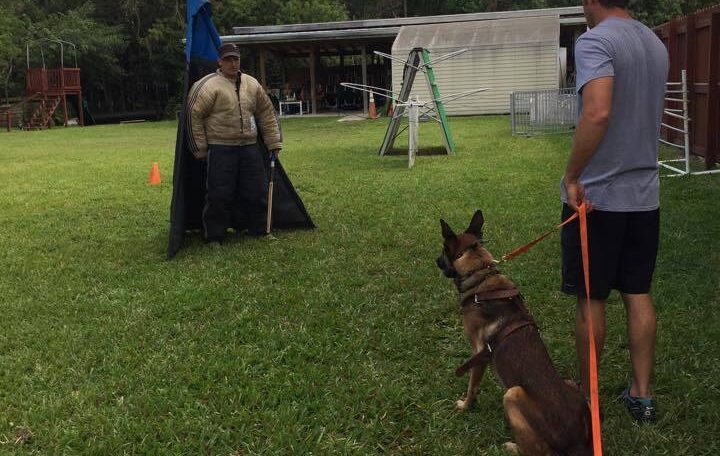When it comes to nurturing a well-behaved dog, obedience training plays a vital role in creating a harmonious relationship. Whether you’re new to dog ownership or experienced with pets, setting your dog up for success in obedience training is essential. From understanding training foundations to considering specialized programs like Dog Board and Train in New Port Richey, this guide explores the ins and outs of effective obedience training to help your canine companion thrive.
The Fundamentals of Obedience Training
Training starts with establishing a clear foundation of commands and routines that your dog can rely on. According to the blog Dog Training Tips: Answering Common Questions On Dog Behavior, foundational commands like “Sit,” “Stay,” and “Come” not only enhance safety but also lay the groundwork for more advanced training. Basic commands offer structure, making it easier for your dog to learn complex behaviors down the road. Additionally, mastering simple obedience helps address common issues, like preventing dogs from chewing on furniture or barking excessively.
The significance of commands is echoed in the blog What are the Essential Commands Every Dog Should Know, which emphasizes the importance of commands such as “Heel” for controlled walks and “Leave It” for impulse control. These commands are especially crucial for busy environments, providing a sense of safety and discipline for both dog and owner.
Why Choose Positive Reinforcement?
Positive reinforcement is at the heart of effective dog training. Unlike traditional punishment-based approaches, positive reinforcement builds trust and encourages dogs to repeat desirable behaviors. The blog What Is The Importance Of Positive Reinforcement In Dog Training explains that methods like luring with food or rewarding with toys can greatly enhance a dog’s engagement and willingness to learn. This approach not only makes training enjoyable but also strengthens the bond between pet and owner.
Studies confirm the effectiveness of positive reinforcement, showing that it increases learning accuracy and reduces stress in dogs. According to a study by the American Veterinary Society of Animal Behavior, positive reinforcement is “associated with better overall behavior in pets” and promotes a deeper sense of connection between dog and handler. This research aligns with the information found in the blog, Is There Follow-Up Training Or Support After The Dog Returns Home, which emphasizes that continued reinforcement through positive methods is essential for long-term success.
Tailoring Training to Fit Your Dog’s Needs
No two dogs are alike, and their training programs should reflect their unique personalities. For instance, the blog What are the Best Methods for Leash Training a Dog suggests that successful leash training requires a blend of negative and positive reinforcement. By tailoring the training approach, trainers can better address each dog’s individual temperament, which is crucial for challenging behaviors like pulling on the leash.
A survey by the ASPCA found that nearly 40% of pet owners reported improved obedience with customized training. For owners looking to address specific issues, private sessions might be the best choice. The blog, What’s the Difference Between Group Classes and Private Dog Training Sessions highlights the advantages of private training for introducing new behaviors in a distraction-free setting. In contrast, group classes offer a social setting for dogs with foundational training, providing the benefit of real-world distractions while fine-tuning obedience.
Managing Common Pitfalls in Obedience Training
Even with the best intentions, common mistakes can hinder a dog’s progress in training. According to the blog What Are The Common Mistakes To Avoid During Obedience Training For Dogs, consistency is one of the most critical factors for success. Dogs rely on routine, and inconsistent commands or follow-through can create confusion and delay results. Another frequent pitfall is limiting training to controlled settings; dogs benefit from learning in diverse environments to generalize their behavior.
Introducing distractions gradually is another key tactic to ensure success. Real-world training allows dogs to develop impulse control, which is particularly helpful when introducing the “Leave It” command in public spaces. Without this practice, a dog may struggle to apply obedience in different contexts, weakening the impact of the training overall.
Structured Support Beyond Training Programs
Many pet owners assume that once formal training ends, the work is complete. However, effective dog training is an ongoing journey. As mentioned in the blog, Is There Follow-Up Training Or Support After The Dog Returns Home points out, follow-up training is critical for reinforcing new behaviors and ensuring they become second nature. Ongoing support may include group classes, socialization events, or one-on-one follow-up sessions that help dogs practice learned behaviors in various settings.
Regular updates from trainers are also essential for tracking a dog’s progress. During follow-up, trainers often adjust strategies based on feedback and real-life scenarios, ensuring a seamless transition back to the home environment. This structured support prevents dogs from regressing to previous behaviors and helps maintain positive changes over the long term.

Essential Qualifications to Look for in a Dog Trainer
The effectiveness of any training program depends heavily on the trainer’s qualifications. In the blog, What Qualifications Should A Dog Trainer Have, it’s suggested that trainers should showcase success through videos and provide a clean, safe environment for training. A skilled trainer is versatile, able to employ different methods to accommodate various dog breeds and temperaments. Furthermore, choosing a trainer with experience in extended courses rather than quick, two-week programs can yield more sustainable results.
Look for trainers who offer a range of services, including Obedience Training for Dogs in New Port Richey and Dog Board and Train in New Port Richey, to find one best suited to your pet’s needs. A trainer’s ability to adapt techniques, prioritize positive reinforcement, and commit to follow-up sessions are all signs of a competent, caring professional.
Maintaining Consistency at Home
After completing formal training, the responsibility of maintaining these behaviors often falls on the owner. The blog How to Maintain Consistency in Obedience Training at Home underscores the importance of integrating training into everyday activities, such as meal times or walks. Keeping sessions short and focused ensures dogs remain engaged without becoming overwhelmed. Simple tasks like practicing the “Sit” or “Stay” commands during routine interactions help reinforce obedience and create a seamless training experience.
Addressing Specific Behavior Issues
For dogs with particular behavioral challenges, specialized training is sometimes necessary. The blog Dog Training Tips: Answering Common Questions On Dog Behavior provides advice on handling issues like excessive barking or chewing. Addressing these behaviors early through targeted training prevents them from becoming ingrained habits. Implementing commands like “Quiet” for barking or using deterrents for chewing can make a world of difference in curbing unwanted behaviors.
One effective approach for managing enthusiasm is found in the blog How to Stop a Dog from Jumping on People. By teaching dogs alternative ways to greet people, such as sitting calmly or rolling over, owners can channel their pet’s excitement into positive actions. This method is particularly helpful in public settings, ensuring dogs remain well-mannered and approachable.
The Role of Training in Ensuring Safety for Your Dog and Others
A well-trained dog not only brings peace to the home but also plays a significant role in public safety. Obedience training for dogs is particularly crucial in settings like New Port Richey, where dogs may encounter various distractions, including other animals, children, and busy streets. Proper training ensures that your dog is prepared to handle these situations without posing a risk to themselves or others.
As highlighted in the blog What Are The Essential Commands Every Dog Should Know, commands like “Recall” and “Leave It” can be lifesavers in busy environments. For example, a dog that reliably responds to “Come” can avoid potential dangers like moving vehicles or aggressive animals. This skill is crucial when exploring outdoor areas, helping you manage your dog’s movements and ensuring they remain within a safe distance.
Additionally, social commands such as “Heel” and “Stay” help dogs navigate public spaces without causing disturbances or feeling overwhelmed. According to the blog, Is There Follow-Up Training Or Support After The Dog Returns Home, continuous reinforcement of these commands at home helps prevent accidents and strengthens impulse control. Such reinforcement is particularly beneficial for dog owners who frequently bring their pets to community parks, where unpredictable interactions with other dogs and people are common.
In environments that require leashing, well-trained dogs are less likely to pull or display sudden bursts of energy that could lead to accidental injuries. The blog What are the Best Methods for Leash Training a Dog discusses effective leash training methods, which are invaluable for owners looking to walk their dogs safely through crowded areas. Leash training not only protects your dog from potential hazards but also fosters a more enjoyable experience for everyone around.
Obedience training, therefore, is an investment in your dog’s safety and well-being. It enhances their confidence, making them more adaptable to various situations. By incorporating consistent commands and building trust, you create an environment where your dog can safely explore and enjoy the world, secure in their responses to your guidance.
The Long-Term Benefits of a Well-Trained Dog
The benefits of obedience training go beyond good behavior; they foster a safer, more enjoyable relationship between owner and pet. A well-trained dog can navigate public spaces with ease, confidently interact with other animals, and remain calm in various situations. For example, the blog How to Potty Train a Dog emphasizes that basic training skills extend to everyday routines, establishing patterns that create a respectful and stress-free home environment.
In conclusion, the journey of obedience training for dogs involves a commitment to consistency, customized training methods, and a qualified professional who prioritizes positive reinforcement. Investing in programs like Dog Board and Train in New Port Richey or seeking out specialized training for behavior issues are valuable steps toward a well-behaved and happy dog. As you continue training, remember that the bond you build with your dog is strengthened with each positive interaction, setting the foundation for a lifetime of companionship and mutual respect.
For more information about comprehensive obedience training for dogs in New Port Richey, visit our website or contact a professional trainer to start your dog’s journey toward a happier, well-mannered life.

